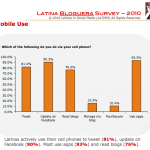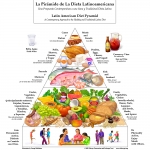Translate Word of Mouth With Social Media Monitoring Tools

A comprehensive measurement plan should consist of three parts—gauging the audiences’ reactions to a brand before, during and after a campaign | Social Media Monitoring Tools
The abundance of content that is easy to access and consume makes launching and sustaining noteworthy online projects challenging. As social media matures, the need to measure online word of mouth and demonstrate success becomes indisputable.
A comprehensive measurement plan should consist of three parts—gauging the audiences’ reactions to a brand before, during and after a campaign. The first step in measuring online word of mouth is to listen and monitor audience chatter across blogs, forums and social networks. This effort helps uncover existing issues, attitudes and behaviors. It marks the starting point for a campaign. The second step requires tracking the campaign’s progress and studying the interaction between message senders and receivers. During this phase, marketers can take note of attitudinal and behavioral changes among their target audience. The third step involves comparing final campaign results with benchmark scores to demonstrate the momentum and change the campaign generated.
When setting benchmarks and tracking online word of mouth throughout the course of a program, marketers can use the following measures to show how their initiatives generated buzz, changed brand perceptions and led consumers to take action.
Volume of discussion: Using blog search engines such as Technorati, Google Blog or research firms’ proprietary software tools, count the number of posts that mention key words or messages related to your program. The numbers of unique Web site, blog and forum posts that reference the brand, product, service or issue indicate online word-of-mouth reach.
Influencer mentions: When writers quote and reference a source, they deem that information outlet reliable and useful. Similarly, every link that points to a social media address boosts that source’s authority. When a blogger refers to your program, enter the blog’s address into the Technorati search engine and note the authority score the search engine calculates for that blog. Some monitoring tools also measure the number of inbound links to blogs from brand sites, news sites, forums and other blogs. The higher the score, the more influential and authoritative the source will be.
Stickiness: To show the full impact of word-of-mouth programs, we must account for those who received and shared a message. Impressions and unique visitors are metrics that speak to the broad universe of people who may have been exposed to a message. However, not everyone passes along every bit of information they receive. Stickiness is based on the percentage of people who pass along a message among those who are exposed to the message.
The Echo Factor and Tone: When reviewing the overall volume of mentions, analysts often distinguish between positive and negative tone. Marketers can take this assessment a step further and measure how their messages echo through consumer conversations. They can calculate the total number of positive and negative messages generated through at least one cycle of word of mouth. Tonality Index, which is based on he ratio of positive to negative mentions, indicates the dominant tone of word of mouth and gives brands a pulse check.
Engagement: There are popular ways of quantifying engagement such as measuring the amount of time spent on a Web site and counting the number of comments online posts garner. Yet, online media engagement can be a qualitative measure that gives directional information about consumers’ online experience. To understand the nature of users’ interaction with the blog content, marketers can study comments’ tone and length. They may find a detailed, positive review more meaningful than a neutral or negative monosyllabic comment. Furthermore, they can classify the topics commentators discuss and analyze the quality of information these social media agents share.
Advocacy: Differentiate between online conversations that are descriptive and those that contain recommendations or warnings. To identify those networking agents who are advocating for a brand, product or a company, look for those who are making solid recommendations, telling others what to do, and potentially influencing others’ opinions and decisions. For instance, “online promoter score,” distinguishing between mavens who are generating much of the volume on an issue and advocates who make recommendations
User Action: Online word-of-mouth campaigns yield recommendations, votes and purchases. When organizations engage word-of-mouth agents and infuse networks with their messages, they hope to see an increase in sales and public support. To connect such outcomes with their marketing initiatives, communication professionals need to document their audiences’ online behaviors and show that online buzz can lead to posts, clicks and downloads, or offline actions such as votes, coupon redemptions and in-store purchases. Marketers can review sales trends during and after the campaign and note any increases that correspond with online buzz volume. Political strategists can explore how visits to online information hubs affect votes, signatures and donations.
Source: PR NEWS










This is surely a great article. Figuring it out the best ways to find value on data gathered from social media monitoring tools is a task that requires time and practice, and you’re making it easier with this publication.
Campaigns and word of mouth are ongoing topics, and it becomes critical to pay attention to them in a world where the social media environment is constantly changing.
I would suggest you to take a look in a post we released recently in our blog, we are talking exactly about it: http://blog.germin8.com/the-art-of-modern-brand-campaigning
Hi Jeferson,
I really appreciate your comment. I am interested in learning more about germin8. I have personally sat and reviewed/evaluated over 200 online monitoring tools since 2009. These types of tools are essential to marketers and have been for quite a while. How can I contact you?
Havi